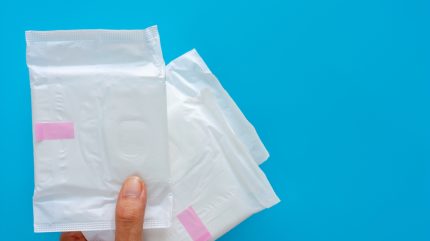
Absorbent pads are a small yet essential component across multiple industries, from food to healthcare. Their ability to manage moisture, maintain hygiene, and protect products during transport is crucial.
As technology and sustainability drive packaging trends, the future of absorbent pad packaging is evolving rapidly, combining innovation, efficiency, and eco-conscious design.

Discover B2B Marketing That Performs
Combine business intelligence and editorial excellence to reach engaged professionals across 36 leading media platforms.
Evolving materials in absorbent pad packaging
The performance of absorbent pads hinges on the materials used in their production. Traditional pads have relied on cellulose, silica gel, and super absorbent polymers (SAPs), each with unique advantages.
- Cellulose-based pads: Made from wood pulp, these pads are biodegradable and effective at absorbing liquids. Their compostable nature makes them increasingly popular in environmentally conscious packaging solutions.
- Silica gel pads: Known for high absorbency, silica gel pads are often used in meat and seafood packaging, typically encased in non-toxic plastic to prevent contamination.
- Super absorbent polymers (SAPs): SAPs are synthetic materials capable of absorbing liquids many times their own weight, making them ideal for medical and industrial applications.
Recent innovations have introduced biodegradable alternatives, such as pads using PBAT (polybutylene adipate terephthalate) combined with thermoplastic starch (TPS).
These materials offer compostable options without sacrificing absorbency, positioning them as a key solution for sustainable packaging.
Sustainability shaping the next generation of absorbent pads
Environmental responsibility is driving change across the absorbent pad industry. Manufacturers are adopting eco-friendly materials, recyclable designs, and production methods with reduced carbon footprints.

US Tariffs are shifting - will you react or anticipate?
Don’t let policy changes catch you off guard. Stay proactive with real-time data and expert analysis.
By GlobalData- Biodegradable pads: Fully compostable cellulose-based or PBAT-infused pads are replacing traditional plastics, reducing landfill waste.
- Recyclable designs: Paper-based absorbent pads with bio-polymer coatings can be both recycled and composted, meeting consumer demand for greener packaging.
- Minimising plastic: Some manufacturers are replacing plastic films with biodegradable alternatives, ensuring pads maintain performance while reducing environmental impact.
These sustainability measures are not just regulatory compliance—they also appeal to increasingly eco-conscious consumers who prioritise responsible packaging in their purchasing decisions.
Market trends and technological innovations
The absorbent pad packaging market is expanding rapidly. Driven by rising consumer demand for hygienic and fresh products, stricter regulations, and technological advancements, the sector is set for significant growth.
Key trends shaping the future include:
- Smart absorbent pads: Integration of sensors to detect moisture or spoilage in perishable goods is emerging, offering real-time monitoring in food packaging.
- Lightweight and high-efficiency designs: Manufacturers are developing thinner, more absorbent pads that use fewer materials without compromising performance.
- Global adoption in diverse industries: From healthcare and pharmaceuticals to logistics and manufacturing, absorbent pads are being incorporated in new applications beyond traditional food packaging.
With an estimated market growth from USD 3.82 billion in 2024 to USD 5.84 billion by 2032, the absorbent pad industry is poised to become increasingly innovative and sustainable, reflecting global trends in responsible packaging and product safety.
Absorbent pad packaging is no longer a simple utility; it’s a field of innovation balancing efficiency, safety, and environmental responsibility.
The future lies in smart, sustainable designs that protect products, reduce waste, and meet the growing expectations of consumers and regulators alike.





